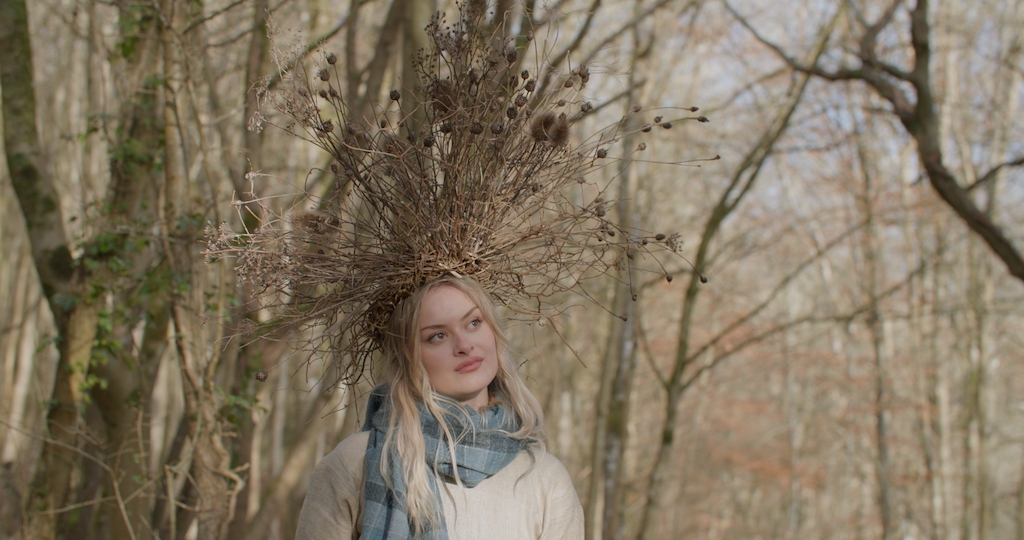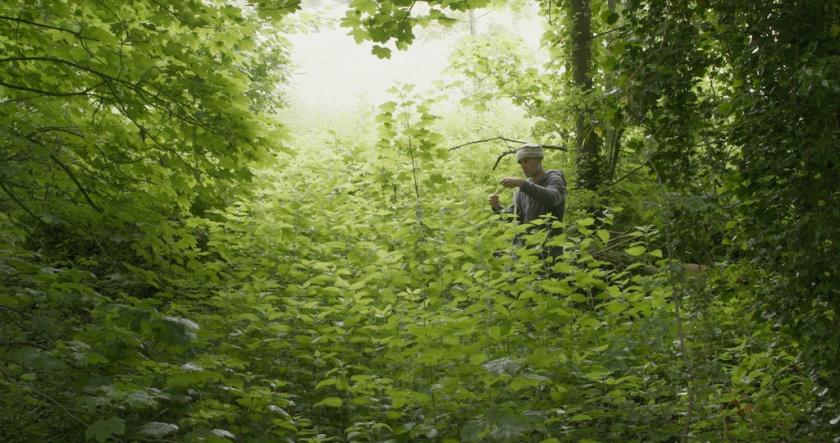Lasting just over an hour, The Nettle Dress is like a fairy story. It builds very slowly, each beautifully framed shot contributing toward a perfect little gem that tells a moral tale.
A man spends seven years coming to terms with the loss of both his father and his wife from cancer by spinning nettle fibres into threads, then weaving them into a length of cloth. He recalls sitting beside a hospital bed, spinning while listening to his father’s breathing dwindle to a last gentle sigh, then during his wife’s final illness, spinning his way through sorrow.
“There were hours of stillness and calm, as she slept and I spun”, he says. “As soon as I was spinning, the anxiety levels dropped. It felt like I was being transformed by the nettles rather than the other way round…I followed the thread back out of lostness.”
His story reminds me of the Greek myth of Penelope, who spent the time awaiting her husband’s return from Troy by weaving a shroud. As soon as the cloth was finished, she would have to declare Odysseus dead and marry one of her suitors, but by unpicking her work each night, she managed to stave off the evil day for three years.
In both cases, spinning and weaving become a form of healing, a way of marking time and enduring loss. “On some levels”, explains the man, “it feels like it’s been a process of weaving a shroud, because it [the thread] was there to absorb loss and grief; but the process has been transformational.”
The ultimate goal was to make a dress for his daughter, but producing the 25 foot length of material needed would take 14,400 feet of thread harvested over many summers. The excruciatingly slow process – of cutting the nettles and stripping the fibres from the stems to carding, spinning, and weaving the threads – is recorded by Dylan Howitt with such fidelity that filming and editing also become a labour of love.
The climax comes when, wearing a dramatic headdress woven from teasels, grasses, and Russian vines, the daughter models her father’s dress in Limekiln Woods where the nettles grow. I could end my review here, marvelling at the beauty of the woods, the widower, his late wife, and their four children – all of whom look like fashion models, which makes the story seem even more like a modern-day fairy tale.
 Likening the film to a perfectly crafted poem, I could award it five stars and break for lunch. But I want more; to fully appreciate the film, I need to fill in some of the back story. I want to know the man’s name and to understand his relationship with the director. How soon after his wife’s death did filming start, and why did he choose to have this deeply private story recorded?
Likening the film to a perfectly crafted poem, I could award it five stars and break for lunch. But I want more; to fully appreciate the film, I need to fill in some of the back story. I want to know the man’s name and to understand his relationship with the director. How soon after his wife’s death did filming start, and why did he choose to have this deeply private story recorded?
The answer to my questions lays to rest any lingering queasiness I have concerning intrusive film-making. It turns out that Howitt and his subject, Allan Brown, are old friends. Brown was experimenting with making cloth from materials like flax and nettles and invited Howitt to film the process. When Nettles for Textiles went online it attracted an amazing two million hits. Then a Facebook group of the same name was set up and attracted 23,000 followers.
Meanwhile, Brown’s nettle-gathering continued apace until he had amassed enough yarn to make the dress and Hewitt began filming again. The final cut consists of material from Nettles for Textiles edited into a seamless whole with footage shot during the last three years of the project.
As well as a beautiful example of independent or “slow” film, then, The Nettle Dress can also be viewed in the context of a burgeoning movement that aims to foster ways of making clothing that is less environmentally destructive than fast fashion, which is another reason why it attracts such positive responses.















Add comment